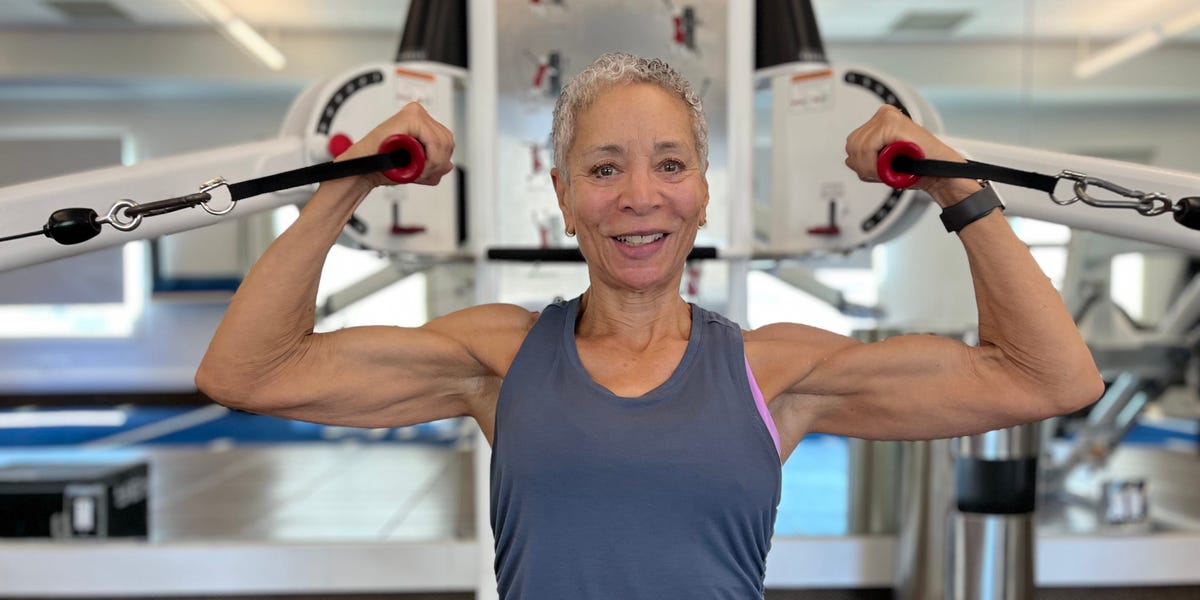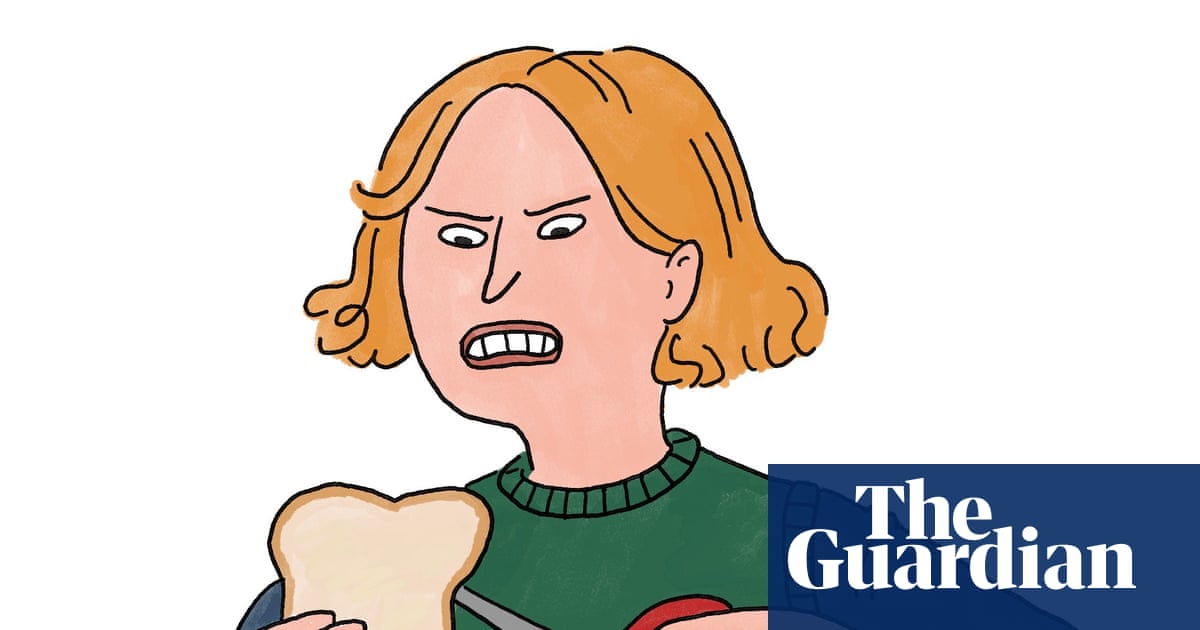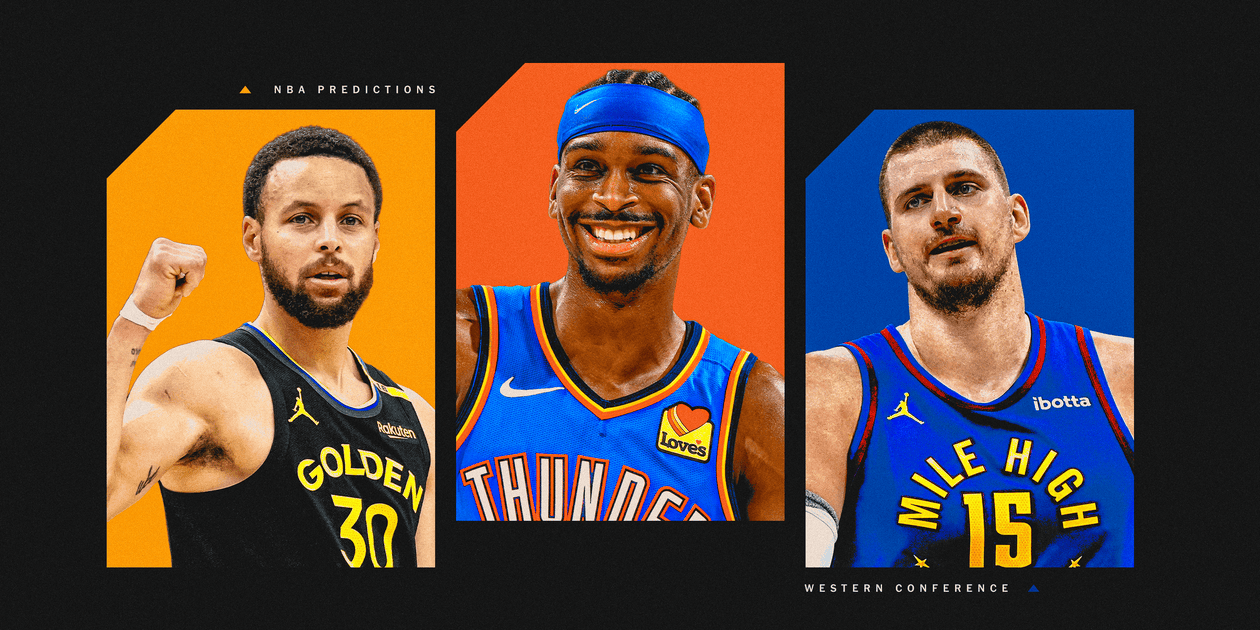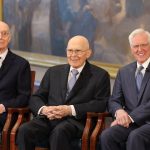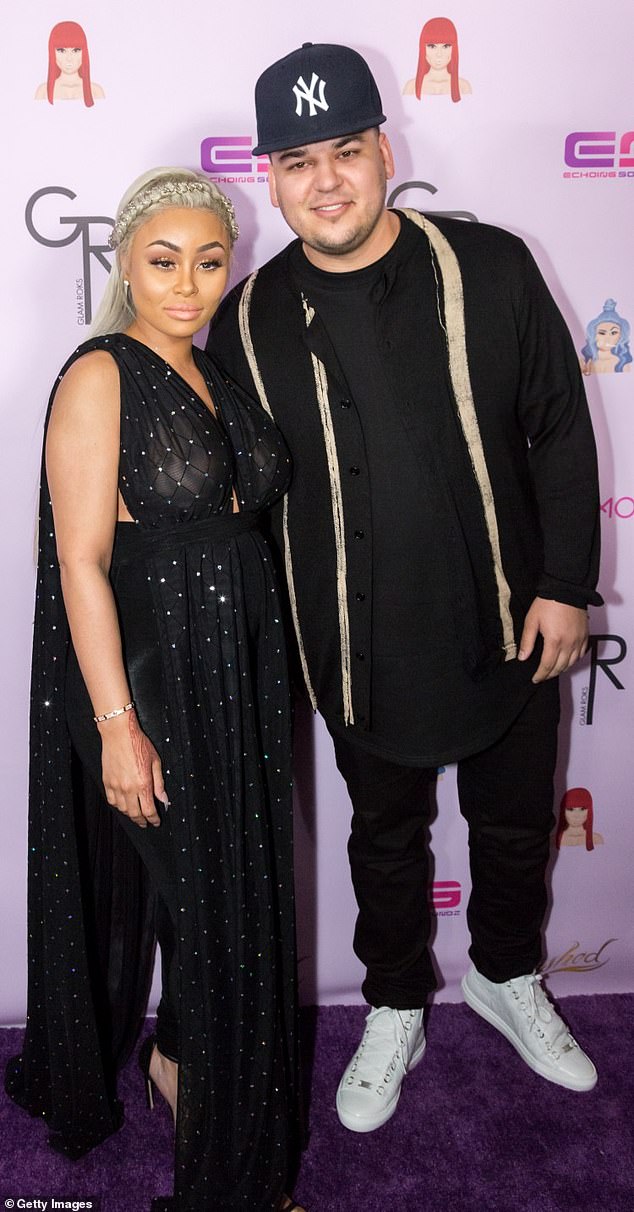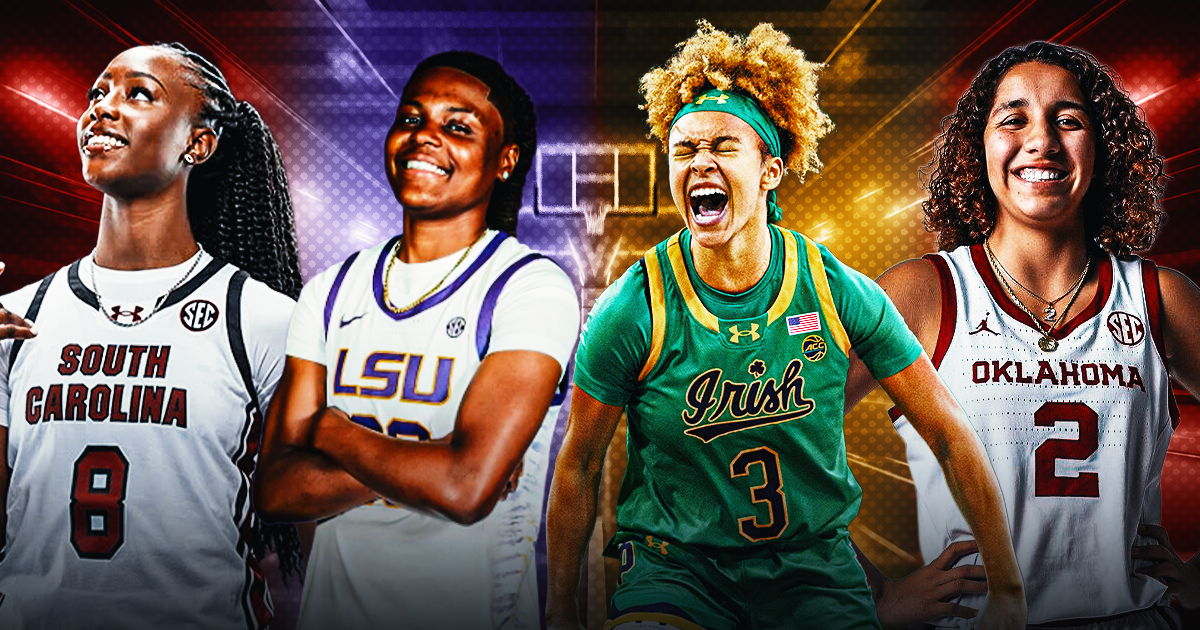Hollinger’s 2025-26 predictions: East’s Bottom 7 | West’s Bottom 7| East’s Top 8
Here’s the irony in the Western Conference: On the one hand, it’s absolutely loaded with quality, as eight different teams have a plausible case for making a conference finals run. On the other hand, it still shapes up as a one-horse race.
Despite the West’s superiority, the Oklahoma City Thunder were a level above everyone else, finishing a whopping 16 games ahead of the second-place Houston Rockets last season. I only have the Thunder outdistancing the field by a dozen games this season. (The gap is closing!)
More seriously, the race for spots No. 2 through No. 8 in this conference should again be invigorating, with playoff matchups likely coming down to the last day of the regular season much as it did a season ago. On paper, there is not much breathing room between the LA Clippers, Golden State Warriors, Minnesota Timberwolves, Houston Rockets, Los Angeles Lakers, San Antonio Spurs and Denver Nuggets … which might help explain why the second seed in the West hasn’t made the conference finals in any of the last four seasons. Virtually any playoff matchup that doesn’t involve the Thunder will be a battle of near-equals.
Nonetheless, my task is to split hairs as best I can and project where each will land in wins and losses. Here’s what I’m forecasting, along with what each team can do in the coming months to shape its future:
8. Houston Rockets (45-37)
One of the biggest questions of the offseason is whether Houston leaned too hard into the two-center frontcourt look that gave it some of its best minutes in the 2025 playoffs. Yes, the trade for Kevin Durant is the headline move of the Rockets’ offseason, for obvious reasons, but when the games start, I’m going to be wondering about the functionality of their huge playing rotation.
The Rockets already employ an All-Star center in Alperen Şengün and traded for Durant, who is best suited for power forward at 37. But that didn’t stop them from also signing Steven Adams for three years and $39 million and Dorian Finney-Smith for four years and $54 million. Or extending Jabari Smith Jr. for five years and $122 million. Or signing Clint Capela for three years and $21 million. Or adding Jeff Green for insurance.
This, mind you, is a team that also employs three mean, tough wings with iffy shooting profiles, ones who often produce their best minutes as undersized power forwards (Tari Eason, Jae’Sean Tate and Josh Okogie). Finally, the team’s best young player, Amen Thompson, was the starting power forward for much of last season.
How, exactly, does this work? Especially now that the one good guard on the roster, Fred VanVleet, is out for the season with a torn ACL?
Presumably, Thompson will be the key, essentially operating as a full-time point guard regardless of who he checks at the other end, and VanVleet’s injury could be an opportunity to experiment with lineups that otherwise might not have seen daylight. Up front, one supposes the Rockets might try starting Smith and Durant as bookend forwards, but neither is particularly comfortable chasing on the perimeter, and Smith’s theoretical stretch game and mismatch post-up potential are limited by a near-total inability to dribble.
On paper, the Rockets also only have two guards besides Thompson, and one of them will have to play heavy minutes with the second group at the very least. That brings up another key question: Can Reed Sheppard play?
The third pick in the 2024 draft was awesome in 2024 summer league but hardly tasted the court last season and showed more warts in his 2025 Vegas stint. On the other hand, his deep shooting and knack for steals would go a long way toward solving some rotational and floor-spacing puzzles. If Sheppard can’t deliver, Aaron Holiday gives Houston a replacement-level floor but not much more than that.
And yet, on sheer talent, this team looks like a beast, especially if Durant can maintain an All-Star level. Thompson can’t shoot but drops jaws nightly with his athleticism and defense, Şengün and Eason are already a problem and still young enough to get significantly better, and if Sheppard is playable, it’s a true 10-deep roster, with a third center (Capela) better than many teams’ backups.
Bigger picture, the Rockets are still in the midst of the “hard decisions” era in their development. Eason is up for an extension, and Thompson will be due for a possible max extension deal a year from now. Houston already cashed in its Cam Whitmore stock because it had nowhere to play him, and it put Jalen Green into the Durant deal; it may need another consolidation move if it plans on bringing back Durant (also a free agent in 2026 but seemingly likely to extend his deal). Smith’s contract extension, in part, seems a bit like Jalen Green’s in that it enables him to be matching salary next summer.
The other hard decision will be whether to make another chips-in move like the one for Durant, because Houston’s asset pool remains amazing. The Rockets have two unprotected first-round picks from Phoenix, in 2027 and 2029, that are perhaps the sweetest trade assets any contender owns, plus a pick swap with lowly Brooklyn in 2027. If the right player becomes available, they can pounce, and that’s their best upside scenario for the coming season. One argument against extending Eason is to keep him as a tradeable contract for in-season work, especially because the Rockets have no expiring money.
Even in the worst case, Houston will be good. Things may be clunky at times as they work out the fit issues, especially early in the season and without VanVleet, but the Rockets will remain a must-watch due to the likes of Thompson and Şengün joining forces with Durant. I’m less bullish on this team than some, and they definitely overdid it on frontcourt additions that left them high and dry in the backcourt when VanVleet got hurt. Still: If they can pull off one more big trade, watch out.
7. San Antonio Spurs (46-36)
The Spurs certainly have an upside to them, with Victor Wembanyama back and poised to push for a first-team All-NBA nod, a full year of De’Aaron Fox (though he is nursing a hamstring injury) and Dylan Harper, the second pick in the draft. However, most of that upside is still tied to the other additions they’ll need to make over the next two seasons. How much of that can reasonably be added between now and the trade deadline?
San Antonio still underwhelms at the forward spot, where the trio of Julian Champagnie, Harrison Barnes and Keldon Johnson is adequate but hardly exceptional, and Jeremy Sochan is still trying to carve out a role that adds value to the Fox-Wembanyama core. Things look better at shooting guard, where Devin Vassell is a solid starter and Stephon Castle looks to build on his Rookie of the Year campaign.
The Spurs should also eat when the second unit is on the floor, as backup center Luke Kornet is a big improvement on what used to replace Wemby, while players such as Harper, Castle, Johnson, Sochan, insurance big man Kelly Olynyk and late lottery pick Carter Bryant round out a solid group. The Spurs cut bait on two underperforming draft picks (Malaki Branham and Blake Wesley) to get Olynyk, a sure sign that they’re moving out of the “development” stage.
The Spurs still have the assets to do more, and that’s where some of the intrigue for this season comes. A 2026 pick swap with Atlanta might not bear much fruit, but they have the Hawks’ pick in 2027 and three future swaps; the Spurs can still deal their own picks in 2026, 2028, 2030 and 2032 as long as they hang on to the Atlanta pick. The Spurs also have 11 surplus second-round picks in their quiver, in addition to seven of their own. Combined with expiring money (Barnes, Olynyk and Sochan can offset $50 million in returning salary), they’re in a strong position to push their chips in if the right player becomes available.
We can’t, alas, count on that player coming available at the snap of a finger, nor can we presume San Antonio would be on such a player’s short list. If the Spurs play out the season with the roster they have, concerns arise about how the workload is shared among Fox, Harper and Castle, especially given how badly the Spurs incorporated Fox into their system after his acquisition last season.
On the sideline, we also will learn more about Mitch Johnson in his first full season at the helm and one where he’s free to do his own thing rather than try to implement what Gregg Popovich was doing. I’m told Johnson’s playbook underwhelmed opposing scouts last season, but he may have had his hands tied. It will be interesting to see what he comes back with this fall.
All of those concerns are lessened by one simple fact: The Spurs have Wemby. He guarantees a top-10 defense basically by himself, and a healthy season from him should be enough to assure a top-eight finish, even in the unforgiving West.
Victor Wembanyama’s presence alone should guarantee San Antonio a pretty high floor defensively. (Scott Wachter / Imagn Images)
6. L.A. Lakers (47-35)
If the NBA were a three-on-three league, the Lakers would be feeling awfully good about themselves. Luka Dončić is a top-five player in the league any time he’s healthy enough to take the floor, LeBron James is still a dynamo at age 40, and Austin Reaves is among the league’s best third options.
Everything after that, however, was what caused the Lakers’ playoff demise a year ago, underlined by a Game 4 in Minnesota in which they didn’t use the bench the entire second half. Even getting to five players they could trust was a pull; players who would normally be secondary role players, such as Rui Hachimura and Dorian Finney-Smith, were entrusted with massive roles.
This year’s version appears better in that area, but I wouldn’t call the patient cured just yet. The Lakers still have Hachimura penciled in as a starter, while the center position has an upgrade on paper in Deandre Ayton; playing for his next contract may incentivize Ayton to up the effort level from his casual displays in Phoenix and Portland.
The Lakers also appear to have upgraded a sad bench to something a bit more respectable by adding Marcus Smart and Jake LaRavia. If nothing else, that should give the Lakers seven guys they can more or less trust in a playoff game before things go off a cliff. It also gives them a bit more resilience to survive James’ absence in the opening weeks of the season.
Alas, seven is a tough way to get through a regular season, especially with James needing spells of rest and Dončić unlikely to bang out 82 games. (He has not played more than 70 since his rookie year.) The “deep depth” is as questionable as ever, with the Lakers hoping to get some decent backup center minutes from one of Jaxon Hayes, Jarred Vanderbilt or Maxi Kleber, Dalton Knecht turning out to not have been the steal of the 2024 draft and Gabe Vincent the only viable ballhandler besides Smart.
L.A. still can do some in-season work, however, with the expiring deals of Kleber, Hachimura and Vincent able to return up to $40 million in salary while staying under the first apron (where they are capped by the Ayton and LaRavia signings) and a tradeable 2031 first-rounder as bait for a trade partner.
That said, it’s questionable whether that’s L.A.’s real endgame or whether the target is surrounding Dončić with another star on his career timeline after this season. The Lakers can up the trade stakes to three firsts at the draft (2026, 2031 and 2033), can take advantage of max cap room to play the free-agent game (a much better percentage play in this market than most others) and then can come back and re-sign Reaves via his artificially low $21 million cap hold once they’re done. The questions about James’ future will obviously hang over the coming offseason as well; those cap-space scenarios only work if he either takes a massive pay cut or goes someplace else.
As for this coming season: The Lakers were quite fortunate to squeeze out 50 wins from a plus-1.2 net rating a year ago and shouldn’t expect to be as fortunate this time around. On the other hand, the underlying quality of the team should be better thanks to a full season of Dončić and what one hopes are upgrades at center and backup wings.
All that means this team might have a puncher’s chance at winning a couple of rounds in the playoffs when they can lean on their best players for 40-plus minutes a night. In the 82-game regular-season slog, however, it may take some work to avoid a third visit to the Play-In in four years.
5. Minnesota Timberwolves (49-33)
The Wolves finished sixth in the West last season with 49 wins. When I ran my numbers for this year, I was surprised to learn that Minnesota was projected to finish here.
Yes, the broad outlines are largely the same — the Wolves are tough, big, expensive and not that deep, and they’re once again counting on their top eight players to cover nearly all 48 minutes every night. That formula is always a hazardous one for the regular-season grind, and it could leave the Wolves behind their rivals in the playoff seedings. However, once we shift into playoff mode, the script shifts: Minnesota can boast a relatively weak-link-free top seven that makes it difficult for opponents to exploit advantages.
First, let’s talk about the new furniture. Minnesota had three key free agents this summer and realistically could only keep two of them, between Julius Randle, Naz Reid and Nickeil Alexander-Walker. The decision to part with Alexander-Walker over Reid, even with Reid’s higher price tag, likely came down to replaceability. With Minnesota pressed up against the second apron, there was no plausible rotation-caliber big man who could come close to filling Reid’s hybrid role between both frontcourt spots.
On the other hand, Minnesota has spent the last couple of years developing alternatives to Alexander-Walker’s minutes, and it’s time to see whether that investment can bear fruit. In particular, Terrance Shannon Jr. provided some jolts of energy in his rare playoff cameos as a rookie and seems primed to take over the eighth spot in the rotation.
At point guard, 2024 lottery pick Rob Dillingham wasn’t as impactful as a rookie and will need to show progress as a playmaker in particular to justify court time at his size. However, he may be needed sooner rather than later with Mike Conley turning 38 and on an expiring deal. (Fun side note: Only 10 players in NBA history have played 20 seasons, and all of them were 6-foot-5 or taller. Chris Paul this year, and Conley, if he’s still playing next year, would be the 11th and 12th at 6-foot and 175 pounds each.)
Minnesota has a couple of other wing options that give it a floor of sorts; Johnny Juzang can make shots and is replacement-level at worst, while Jaylen Clark’s defense could make him a more regular contributor. First-round pick Joan Beringer is a developmental player at the center spot who seems unlikely to contribute this season.
However, the Wolves’ big picture remains the same: They’re basically locked in with this group. The Wolves are just $1.3 million from the second apron. While they aren’t hard-capped at the moment, they also seem unlikely to go over and freeze their 2033 first-round pick, not when their 2032 first is already frozen and they may need at least one of those picks to make any roster moves after this season.
Trading in-season will be a challenge. The Wolves don’t control any tradeable firsts, and none of their young players would generate much interest on the market. Theoretically, the Wolves could use Conley’s expiring contract and second-round picks to get … something? … but that would only be a compelling scenario if the Wolves had Dillingham ready to go, which seemed miles away from reality last spring.
They’ll run it back, because what else can they do? The Wolves are simultaneously almost guaranteed to be good and almost equally guaranteed to be not quite good enough. Diehards can tempt themselves with a scenario where Anthony Edwards goes supernova, Rudy Gobert and Conley hold off Father Time another year and the Thunder step on a few rakes. But the more likely scenario is that the Wolves are holding serve this year to get to a more interesting — but still apron-compliant — roster a year from now.
4 . Denver Nuggets (50-32)
One can argue that former Nuggets GM Calvin Booth’s biggest weakness was that he believed too much in what he was doing, in particular in the idea that his draft strategy was going to bear fruit on such a level that late picks would turn into championship-level rotation pieces within two years. Thus, the Nuggets were left with, “Let’s see if Hunter Tyson and Jalen Pickett turn into long-term core guys,” as Plan A to get them through Nikola Jokić’s prime and gave Zeke Nnaji $32 million on the premise that he’d someday be useful.
That’s too reductionist, of course; other mistakes were made. Disastrous contracts for Reggie Jackson, Dario Šarić and Nnaji made the bench a wasteland, while the Nuggets’ significant spending constraints — both the self-imposed ones and those created by the tax aprons — blocked the way for other roster upgrades and leaked draft picks in salary-dump trades.
Yet, after all of that, a fair critique is that the Nuggets’ biggest mistakes have not come from the times they were cheap but from when they acted like they weren’t cheap. Max extensions for Michael Porter Jr. and Jamal Murray, both coming against the backdrop of, “Who, exactly, were you bidding against here?” painted them into such a corner that they gave up an unprotected 2032 first just to turn Porter into Cam Johnson. One can argue whether Johnson fits better than Porter. What is inarguable is that he makes half as much, and that factor was the driving logic of the deal.
The Nuggets had an absolute plum asset in that 2032 pick, one that could have been used to make a fairly serious upgrade (a sixth starting-caliber player, basically), and instead they were forced to use it to make a largely neutral basketball trade whose main impact was softening the financial blow of the Nnaji, Porter and Murray mistakes. In fairness, the Nuggets’ recent money-motivated moves — such as when they acquired Kentavious Caldwell-Pope, and again when they let him walk — have at times been their best ones.
The upshot, after all of that, is that the Nuggets are largely where we found them last: With an elite starting five helmed by an all-time great in the middle and with a roster littered with question marks after that.
Despite a major upgrade at backup center (Jonas Valančiūnas replaces the utterly washed Šarić) and glimmers of hope on the perimeter positions (minimum acquisitions Bruce Brown and Tim Hardaway Jr.), this still rates as the worst bench of any playoff team by a significant margin.
The notion that Brown will revert to the player he was three years ago is doing a lot of heavy lifting in optimistic Nuggets scenarios. However, he’s played for three teams over the last two seasons and wasn’t above replacement level for any of them, being actively terrible for Toronto in particular. Hardaway provides a much-needed volume 3-point shooting component for Team 2-Pointer (Denver was last in 3-point frequency last season), but he was low-key bad in Detroit last season (9.8 PER, minus-2.1 BPM) and is 33 years old.
And yet … the Nuggets had all these weaknesses last season and still took the eventual champion Thunder to seven games in the second round of the playoffs. David Adelman took over for Michael Malone as head coach in the final week of the season, when the Nuggets axed both Booth and Malone. Notably, Adelman had the Nuggets shooting 3s at a much higher rate in the postseason; Denver’s 35.3 attempts per 100 in the playoffs were right at the league average, after it was in a distant last place at 31.7 in the regular season.
The Nuggets have a high playoff ceiling because of Jokić, but the ability of the bench to carry them through the regular season remains questionable, especially if the Joker misses any time or they have other injuries in the starting five. (Johnson, notably, has missed 89 games over the past three seasons and has never played more than 66 in his six pro seasons.)
Can any of these recent draft picks step up? Peyton Watson was sixth on the team in minutes last season and entering Year 4 but still hasn’t cemented himself as a rotation piece. Julian Strawther, a first-round pick in 2023, is an alleged shooter who is at 33.2 percent from 3 for his career. Pickett had moments last year and may get more of a chance with Russell Westbrook gone, but it’s hard to play a low-usage guard in the non-Jokić minutes. If 2024 first-rounder DaRon Holmes can work his way back from an Achilles tear, that would be a bonus. Nnaji and Tyson … sigh.
Sorry if this sounds familiar, but the analysis hasn’t changed much over the last few years. The Nuggets have a puncher’s chance of beating anybody in a seven-game series where their starters are healthy and play 280 minutes apiece. But they’re unlikely to emerge from the regular-season grind in a favorable position, and the odds of their season ending in exhaustion against a deeper West foe seem strong.
3. Golden State Warriors (51-31)
I don’t love using “after the trade deadline” records because so many of the games are against teams who are either half-trying or overtly tanking, but hear me out: Golden State last season went 24-8 after the Jimmy Butler trade. The Warriors won the Play-In game against Memphis, beat the second-seeded Rockets in the first round and won Game 1 in Minnesota, taking the mark to 30-11, before Stephen Curry’s hamstring injury effectively ended their season.
A half-season of 30-11 basketball is fairly convincing evidence that the Warriors are more than a “meh” middle-of-the-pack team after two and a half years of looking exactly like that following the 2022 championship.
Age is a big concern: Curry is 37, Butler is 36, and Draymond Green is 35. Somehow, they found a fourth starter who is even older in 39-year-old Al Horford. These guys aren’t playing 82 (or even 72) games in the regular season. But Curry and Green have reinforcements. Horford adds the stretch big component the Warriors have desperately needed the past few years while still filling the “switchable, high-IQ big” niche, and Butler gives the Warriors a way to survive on the non-Curry minutes offensively and ensure they don’t wear him out.
Additionally, the Warriors have youth all around their core players. Jonathan Kuminga was the big news maker all summer, but Brandin Podziemski is likely the more important one as far as Golden State’s fortunes are concerned. He emerged in the second half of last season after playing too much on the ball early on, and at 22, he could still go up another level.
Kuminga and Moses Moody are both 23 and figure to round out the main core of the roster … at least until the point that one or both are included in a package for another elite wing. Golden State is hard-capped at the second apron and just a few dollars from the line but can include up to three unprotected firsts — in 2026, 2028 and 2032 — in any trade proposal, as well as the business portion of a 2030 pick that goes to Washington if it lands 21st through 30th. Kuminga’s $22.5 million outbound salary likely would be the core of any salary match.
The Warriors’ depth pieces look solid enough (Buddy Hield, De’Anthony Melton and Gary Payton II, with sprinklings of Trace Jackson-Davis, Gui Santos and Quinten Post), but the roster still feels incomplete. There is no real backup point guard, and the team is short across the board. Between that, the age issues and the general brittleness that comes with it, the Warriors probably don’t have more than one good playoff round in them. But in terms of Curry’s challenge of “being relevant” from last season, the Warriors are definitely relevant.
2. LA Clippers (54-28)
The Clippers were one of the NBA’s most pleasant surprises last season, shrugging off the loss of Paul George to win 50 games and, as a result, dodging the consequences of paying him extravagantly through his decline years. In retrospect, passing on re-signing him was one of the best and bravest decisions in recent NBA history, especially since the knee-jerk default move for most NBA franchises would have been to pay George and figure things out later.
In terms of basketball, there’s a strong case to be made that LA will be even better this season, even if James Harden and Ivica Zubac will be hard-pressed to match the seasons they delivered in 2024-25. But first, we must discuss the elephant in the room.
The Kawhi Leonard cap-circumvention investigation will hang over this team for much of the season, as the league will likely take its time gathering evidence and ruling on any punishments for the team and Leonard. As I’ve discussed before, the potential penalties are severe, up to and including voiding Leonard’s contract and preventing him from re-signing with the Clippers.
Amid all of that, the Clippers quietly gave their roster a facelift in several areas. Most notably, they somehow added three starter-caliber players at bargain-basement prices in veterans Brook Lopez, Bradley Beal and Chris Paul. Elite additions at backup center and backup point guard are particularly notable given that the Clips basically had neither a year ago. LA is now looking at having Paul, Lopez, Bogdan Bogdanović, Kris Dunn and Derrick Jones Jr. as their second unit. That’s impressive and gives the Clippers a high regular-season floor.
Moreover, cashing in Norman Powell’s career year for John Collins allowed the Clippers to have a real power forward on the roster for the first time in years. Collins was a trade rumor meme in Atlanta but is now one of the league’s most underrated players, posting 53/40/85 shooting splits in Utah last season. He’s big enough to take shifts at backup center and can also provide some interior size and athleticism next to Zubac so they don’t get their butts kicked by Aaron Gordon in the playoffs.
Now, for the bad news: So much of the premise of the Clippers’ upside is built around, “If we get a healthy Kawhi for the playoffs…” Well, for once, LA actually had this, with Leonard playing all seven games in the first round last season. And while he was good, his only dominant moment came in a 39-point Game 2. By Game 7, he looked cooked as the Nuggets — a team not exactly renowned for depth — ran circles around the Clips.
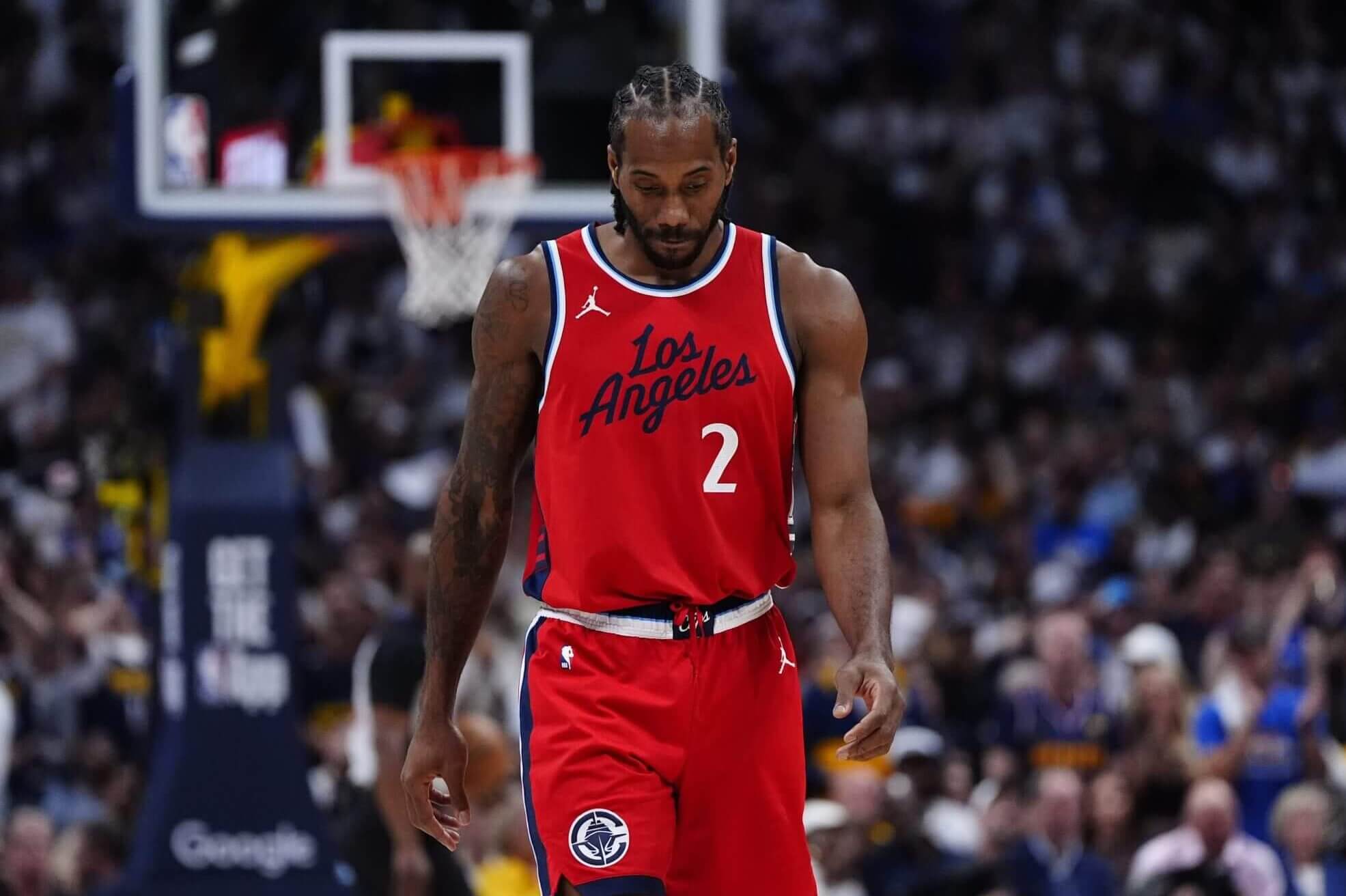
Kawhi Leonard was healthy in the playoffs last spring, but it didn’t matter in the Clippers’ series against Denver. (Ron Chenoy / Imagn Images)
Thus, if LA’s floor is underrated, its ceiling might be the opposite. Depth still matters in the postseason, but its impact is lessened as more burden falls on the top seven players. Look at my top eight projected teams in the West and ask: Even with a healthy Leonard, would LA have the best player in the series in any of these matchups? Maaaybe Houston or Golden State, and those are the only ones I can get close to “yes” on.
While I’m bullish on the Clippers’ regular-season case, I’m still not sold on what that means once we get to the playoffs. The second seed in the West hasn’t made the conference finals since 2021. It seems very possible that the streak could extend to a fifth year.
1. Oklahoma City Thunder (66-16)
Name your record, Thunder. You want to go for 73 wins? You might be able to pull it off, although much like the 2015-16 Warriors, it may cost you in June. More likely, the Thunder let off the gas just enough to cruise into the finish line with a win total in the mid-60s that still comfortably assures them of home-court advantage in every round.
Amazingly, Oklahoma City brings back the same top 13 players from last year’s roster. New entrants are Nikola Topić, the 2024 lottery pick who redshirted last year through a knee injury, and 2025 first-rounder Thomas Sorber, who is about to do the same thing after tearing his ACL in the offseason. Gone is Dillon Jones, a head-scratching late-first-rounder 2024 who was dropped off on the Wizards’ roster to make room for Sorber. (While we’re here: Keep an eye on second-rounder Brooks Barnhizer, who is on a two-way and impressed in summer league.)
Frankly, the only interesting questions facing Oklahoma City right now are: What could possibly go wrong this year to mess it up? And: What could keep the Thunder from running this back year after year after year and owning the West for a decade?
As for the first item, “injuries” would be the obvious answer, particularly given the history of frailty that center Chet Holmgren has shown. But even so, the Thunder won 68 games with a historic scoring margin last year while dealing with extended absences from both Holmgren and fellow big man Isaiah Hartenstein; Holmgren only played 32 games.
More broadly, an extended absence from MVP Shai Gilgeous-Alexander would likely chip away at the Thunder’s dominance, although even in this scenario, it seems likely the team would win more than half its games in his absence. The Thunder outscored opponents in the non-SGA minutes a year ago, although by a relatively meager amount (plus-5.2 points per 100 possessions) by their standards. Amazingly, the Thunder had a double-digit-per-100 advantage with every two-man player combination involving the MVP, including the one minute he played with Alex Ducas.
In realistic health scenarios, the biggest threat to Oklahoma City’s dominance is likely that opponents “figure out” their defense after a year of seeing it. Teams such as Denver and Indiana seemed to get a bit more comfortable with the Thunder’s pressure tactics as their playoff series went on, and one wonders if teams can chip away at Oklahoma City’s dominant results by generating kickout 3s and limiting live-ball turnovers.
Those miscues were the Thunder’s lifeblood and papered over the one genuine shortcoming: They just weren’t that good in half-court offense, relying heavily on isolations and guard-guard screens to produce pull-up 2s. It hasn’t always translated to the highest levels over the past two years, even with the Thunder winning the 2025 title. Oklahoma City prevailed in the NBA Finals with a relatively meager 111.6 offensive rating, shooting just 43.8 percent despite facing an opponent that wasn’t regarded as a defensive juggernaut; the Thunder’s one superpower on that end was absolutely elite turnover avoidance.
On the other hand, a look at the birth certificates on the roster will tell you the Thunder are more likely to continue racing away from the league than the league is to start reeling them in. Oklahoma City three’s core stars (Gilgeous-Alexander, Jalen Williams, Holmgren) are 27, 24 and 23, respectively. Alex Caruso and Kenrich Williams are the only players older than 27.
The Thunder also have cards to play in-season if needed, with an expiring contract in little-used Ousmane Dieng, millions in room below the first apron and three 2026 first-round picks they can put into play in addition to several picks in future years. (They technically have a fourth 2026 first-rounder, but it’s Utah’s and it’s top-eight protected and will be extinguished after this year. Thunder fans, you’ve got better odds of seeing Sasquatch than you do of seeing that pick materialize.)
In the big picture, perhaps no defending champ in recent memory has been better-equipped to not only defend its title but to stay relevant in the title race for a period of several years beyond. Sometimes weird stuff happens, but it would take quite a confluence of events to keep the Thunder from dominating once again this season.
Sign up to get The Bounce, the essential NBA newsletter from Zach Harper and The Athletic staff, delivered free to your inbox.
How optimistic are you about your favorite NBA team? Click here to quickly help us put together our 2025-26 Hope-o-Meter. Results will be published during the opening week of the regular season.
First Appeared on
Source link






